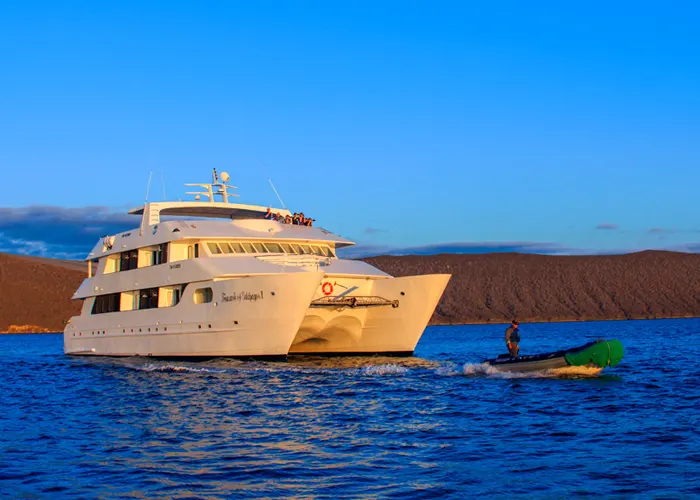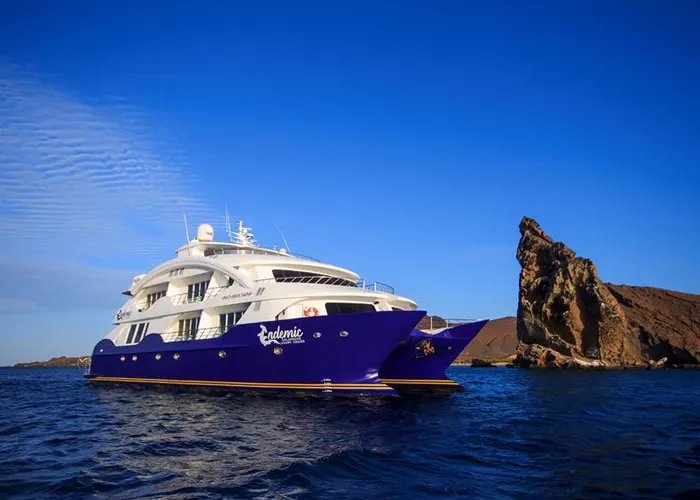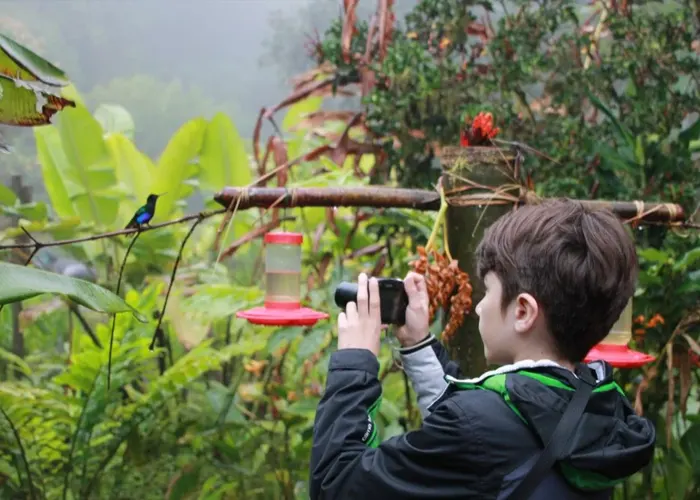Floreana Island Galapagos
Floreana island
Floreana island: Discover the Hidden Gem of the Galápagos!
- Area: 173 km²
- Highest point: Cerro Pajas: 640 m
- Population: 100 inhabitants
- Travel options: Cruise ship, speedboat from Santa Cruz (not daily)
Visitor highlights:
- Postamt Bucht
- Baroness Lookout
- Kormoran-Punkt
- Devil’s Crown
- Champion Islet
- Asyl des Friedens
- La Lobería
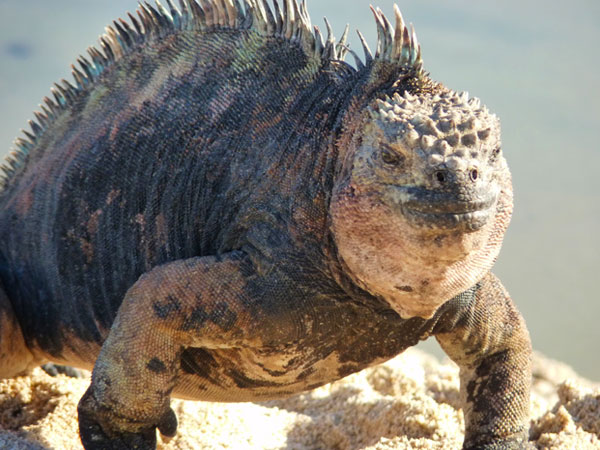
General information
Floreana is the southernmost and smallest inhabited island in the Galapagos. It is also known as Santa Maria or Charles. The official name Floreana refers to Ecuador’s first president, Juan José Fores, while ‘Santa Maria’ commemorates one of Columbus’s ships. The English name Charles is in reference to the British King Charles II.
Geologically, Floreana is a shield volcano with 50 scoria cones on land and 6 tuff cones in the surrounding waters. The lava flows from these craters shape the island’s landscape. The history of Floreana’s colonization is so diverse, intriguing, and somewhat mysterious that several books have been written about it.
The introduction of domestic animals, especially goats brought by settlers, had devastating effects on the island’s native species: the Floreana giant tortoises were completely wiped out, and the Galapagos hawk and the Galapagos mockingbird were nearly displaced. Targeted conservation efforts aim to restore and stabilize populations of Galapagos racer snakes, hawks, barn owls, and especially the Galapagos mockingbird.
Floreana is visited as part of many cruises, such as with the Archipel I catamaran, the Golondrina, Angelito, and Estrella yachts. The island can also be visited with a day trip from Santa Cruz.
Places to visit on Floreana Island
Post Office Bay
At this spot in 1793, whalers placed a wooden barrel that served as a mailbox. Sailors anchoring here would take the letters with them, delivering them to recipients near their destination. Today, tourists can “send” their mail in the same way, although the original wooden barrel is no longer there.
Around 1926, Norwegian settlers arrived at the bay with the aim of colonizing the island from here, but the attempt failed.
From the post barrel, there’s a short detour to an underground lava tube that can be visited. It’s advisable to bring a flashlight and sturdy footwear.
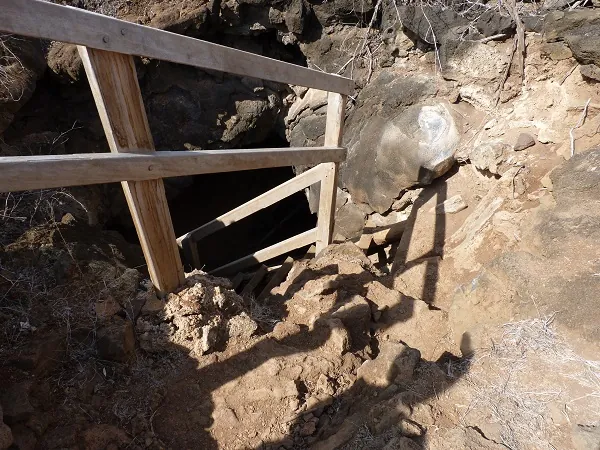
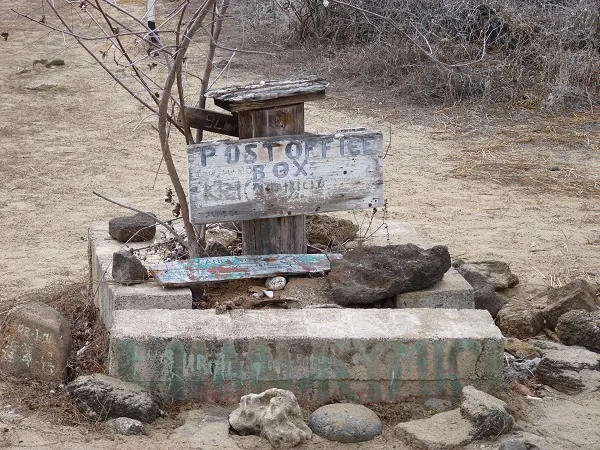
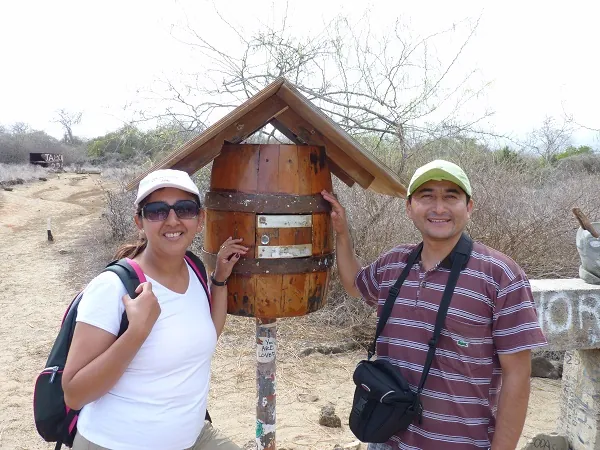
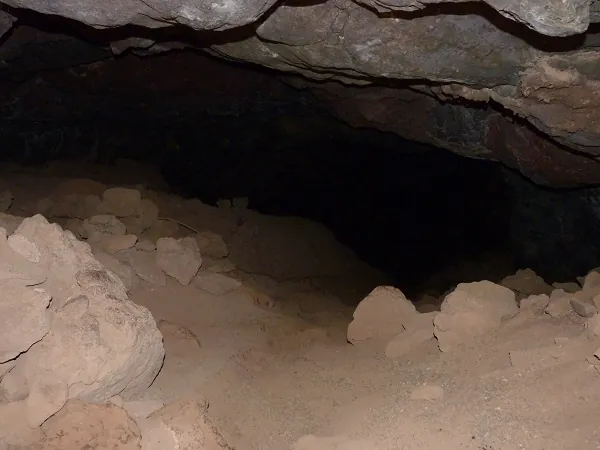
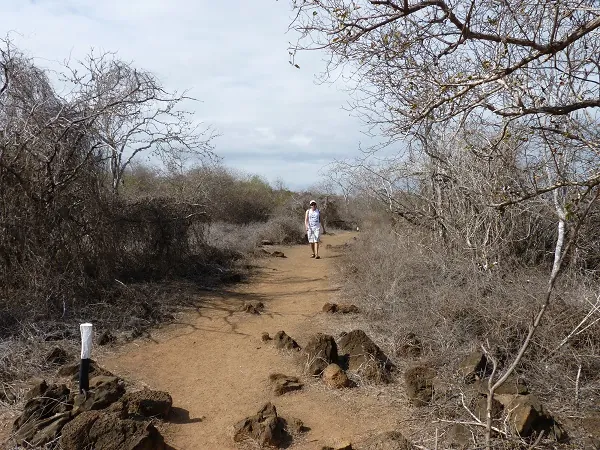
Baroness Lookout
The viewpoint is named after the self-proclaimed Baroness Eloise Wagner de Bousquet, who supposedly kept watch for arriving ships from here. You’ll reach the site after a wet landing and a short hike. The view is impressive—you can overlook large parts of the island and the entire bay with Enderby Island. Several short trails lead through the landscape. Near the viewpoint are the ruins of the Baroness’s residence.
In the bay itself, from the panga, you can observe rays, sea turtles, sea lions, and perhaps even Galapagos penguins in the water. The coastal landscape is characterized by red mangroves.
Cormorant Point
Cormorant Point is the northernmost point of Floreana Island. The isthmus in front of the peninsula is lined with beaches on both sides, connected by a trail. One beach has a greenish hue, attributed to olivine crystals. Here, a colony of sea lions resides. The other beach is known as a “flour sand” beach, as its sand consists of finely powdered coral. Whitetip sharks and stingrays are often spotted in the water. Between December and March, sea turtles come ashore to lay their eggs. The trail between the two beaches passes by a brackish lagoon, where Galapagos flamingos, pintail ducks, stilts, yellow warblers, whimbrels, and various finch species can be observed.
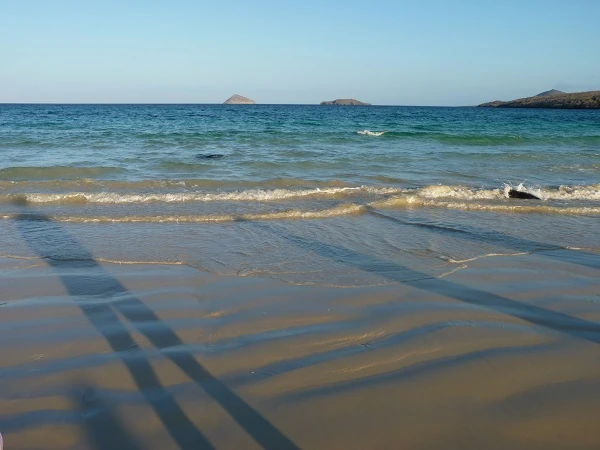
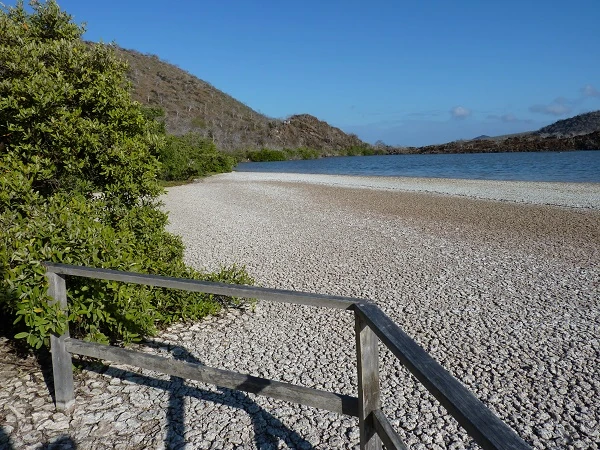
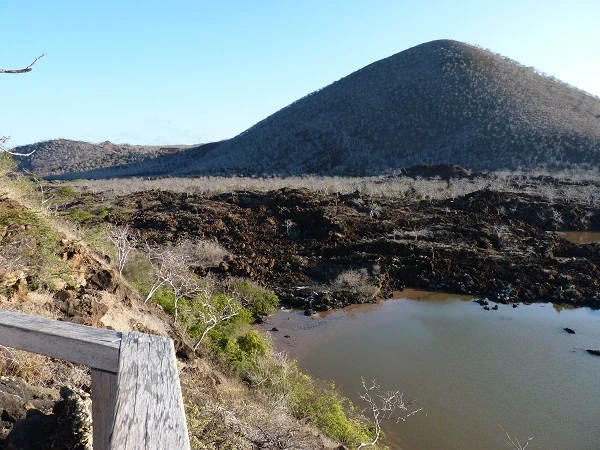
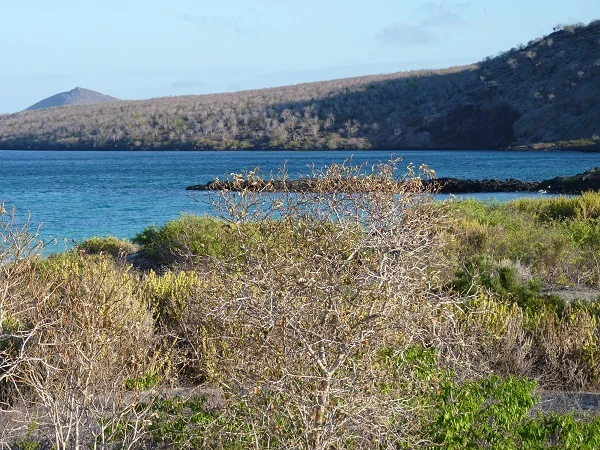
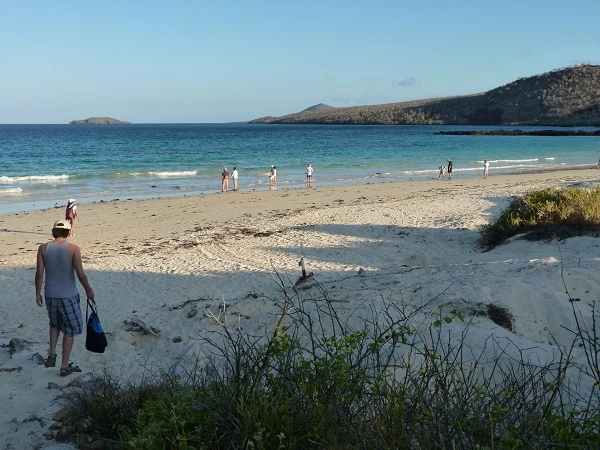
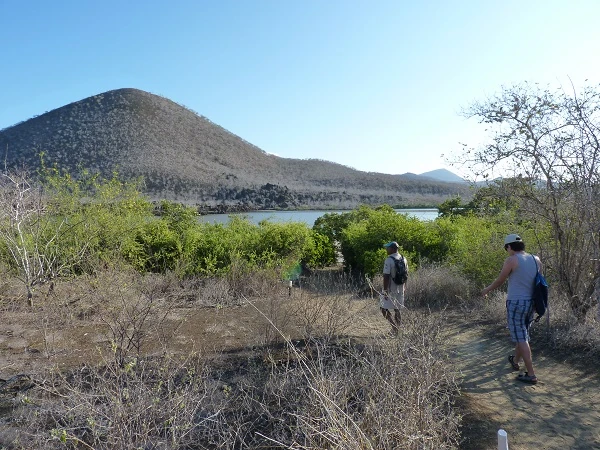
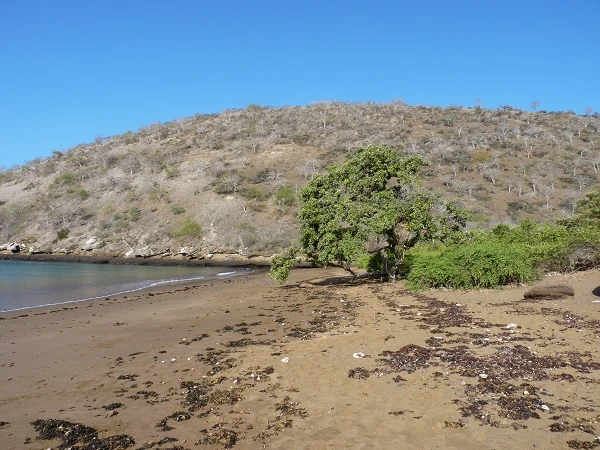
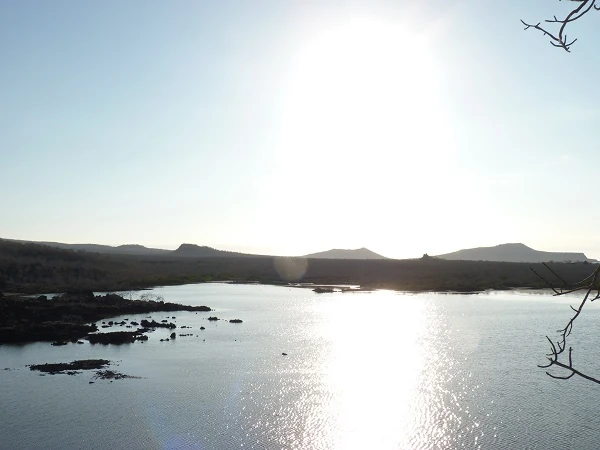
Devil´s Crown
This small group of rocky islands is a partially submerged and heavily eroded volcanic cone. Located off Cormorant Point, it is partially surrounded by strong currents. Within the crown, the water is calmer, creating a true paradise for snorkelers and divers. You can dive through tunnels and along coral reefs, where you’ll find a variety of marine life, including schools of fish, colorful angelfish, pufferfish, reef sharks, eagle rays, wrasses, and sea turtles. You’re also likely to encounter playful sea lions. The rocks are home to a variety of birds, including various species of boobies, pelicans, frigatebirds, and red-billed tropicbirds nesting in the crevices.
Champion Islet
Champion Islet is another significant snorkeling spot. Located northwest of Floreana Island, it can be reached by a panga tour, as landing on the island is not permitted. While circumnavigating the small island, you can observe its diverse birdlife, including Nazca and blue-footed boobies, swallow-tailed gulls, herons, frigatebirds, pelicans, and red-billed tropicbirds. Particularly significant is the small island for the endangered Floreana mockingbird, as it is the only place, along with Gardner Island, where populations of this bird species exist, with a total of only about 100 individuals.
In the water, with a bit of luck and depending on the season, whales and dolphins can also be spotted, along with sea lions, sharks, various species of rays, and possibly sea turtles.
Asylum of Peace
The “Sanctuary of Peace” is located in the highlands of the island, a few kilometers from the main town of Puerto Velasco Ibarra. The hill, approximately 450 meters high, holds historical significance. It was here that the first settlers established themselves due to a freshwater spring, finding refuge in the nearby caves. There is a small visitor center and a breeding station for San Cristobal giant tortoises. Visitors can hike up the hill and explore the caves, so sturdy footwear is recommended.
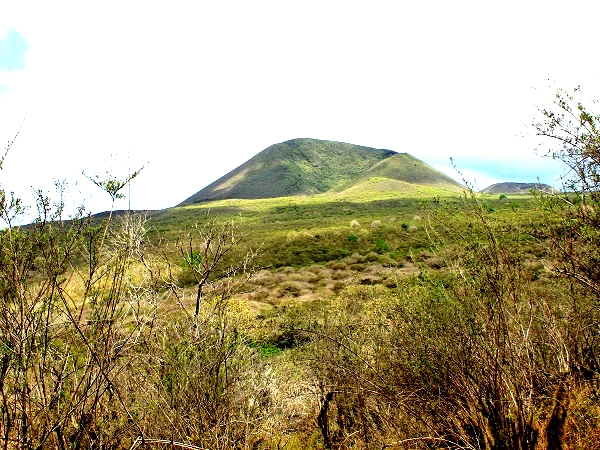
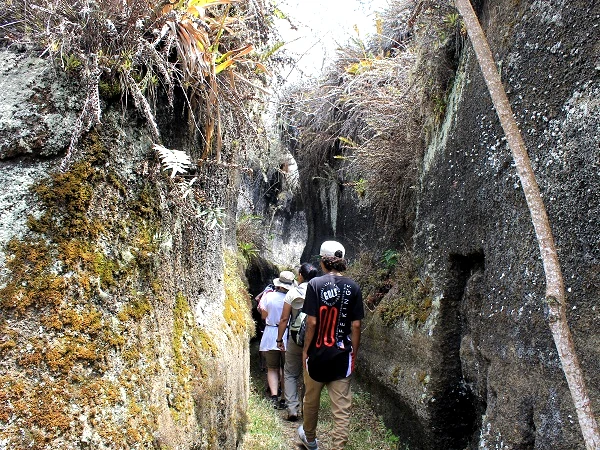
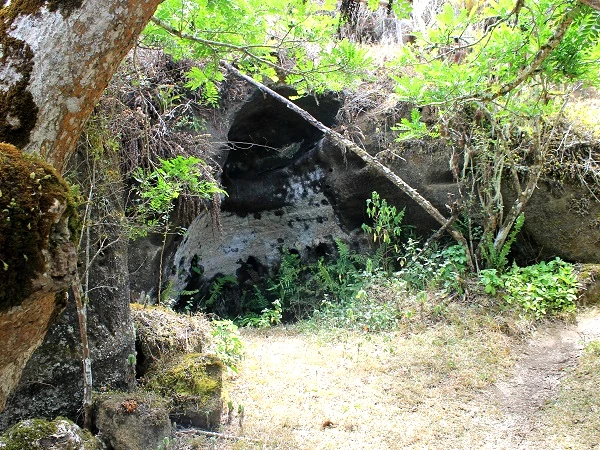
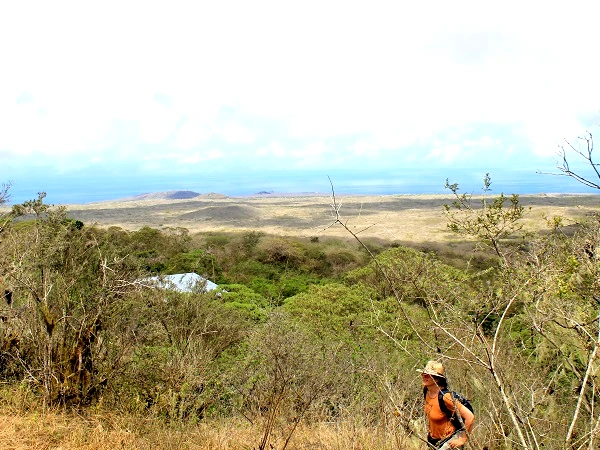
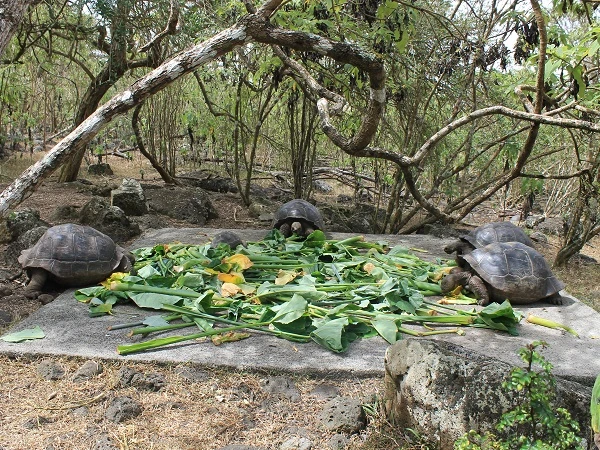
La Lobería
The rocky promontory on the west side of the island is a favorite spot for sea lions. Entire colonies gather here, frolicking in the sand or lounging on the rocks. Marine iguanas and lava lizards are also present, attracted by the warmth stored in the rocks. A nearly one-kilometer-long path winds between the rocks and the white sandy beach. Sometimes, sea turtles can be observed in the rock crevices.
